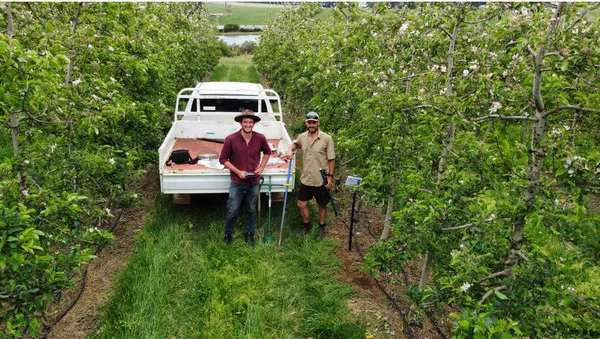A soil moisture monitoring project has commenced boosting water use efficiency and profitability of Western Australian horticulture businesses. The Department of Primary Industries and Regional Development (DPIRD) is working with 15 fruit and vegetable growers in the South West and Carnarvon to examine how commercial monitoring technology can enhance irrigation scheduling.
The Australian Government’s Future Drought Fund has invested in the project, led by the South West WA Drought Resilience Adoption and Innovation Hub (SW WA Hub) in partnership with DPIRD, as part of a broader national initiative.
DPIRD research scientist Bill Bateman said significant advances in soil moisture monitoring technology had been made in recent years, making it more functional and less labor-intensive.
“The technology is now all automated, with the data fed at regular intervals to a digital device, with little requirement for regular paddock checks or maintenance,” he said.

DPIRD research scientist Bill Bateman (left) and Manjimup apple grower Mark Bamess surveying for suitable orchard locations to install the soil moisture sensors to boost water use efficiency and profitability. (©2022 DPIRD)
Evaluating sensors
“This project aims to assist growers in understanding the technology and evaluating a range of sensors for different crop types. I’ll also be working with growers to interpret the data and determine how it can be used to fine-tune their irrigation systems to reduce water wastage and improve efficiencies and effectiveness – saving growers time and money.”
Soil moisture sensing equipment is being installed on five avocado farms and five apple orchards in the South West, while interest is being sought from five tomato farms in the Carnarvon irrigation area. Data is provided via an online cloud service, where graphs of volumetric water content over time is displayed.
Growers will be guided through interpreting the data to identify soil water holding characteristics and determine the optimal timing and duration of irrigation scheduling to avoid losses in yield, water, and fertilizer.
New technology
“The use of soil moisture monitoring in irrigated agriculture is still growing in Western Australia, as growers learn more about how this technology can benefit their operations,” Mr. Bateman said.
“This project will assist growers in understanding and applying the data from soil moisture monitoring, making irrigation systems more efficient – reducing operating costs and increasing crop margins.”
Field walks and field days are planned as the project progresses so growers can share experiences and learnings via the 15 participating case studies.
SW WA Hub knowledge broker Tanya Kilminster said drying climate conditions could have a major impact on irrigators’ access to surface and groundwater resources, and this project would support them to use irrigated water more efficiently.
“The project is a great example of how the Drought Resilience Adoption and Innovation Hubs are facilitating broad collaboration to achieve adoption of drought resilience and innovation practices,” she said.
Source: www.agric.wa.gov.au.
